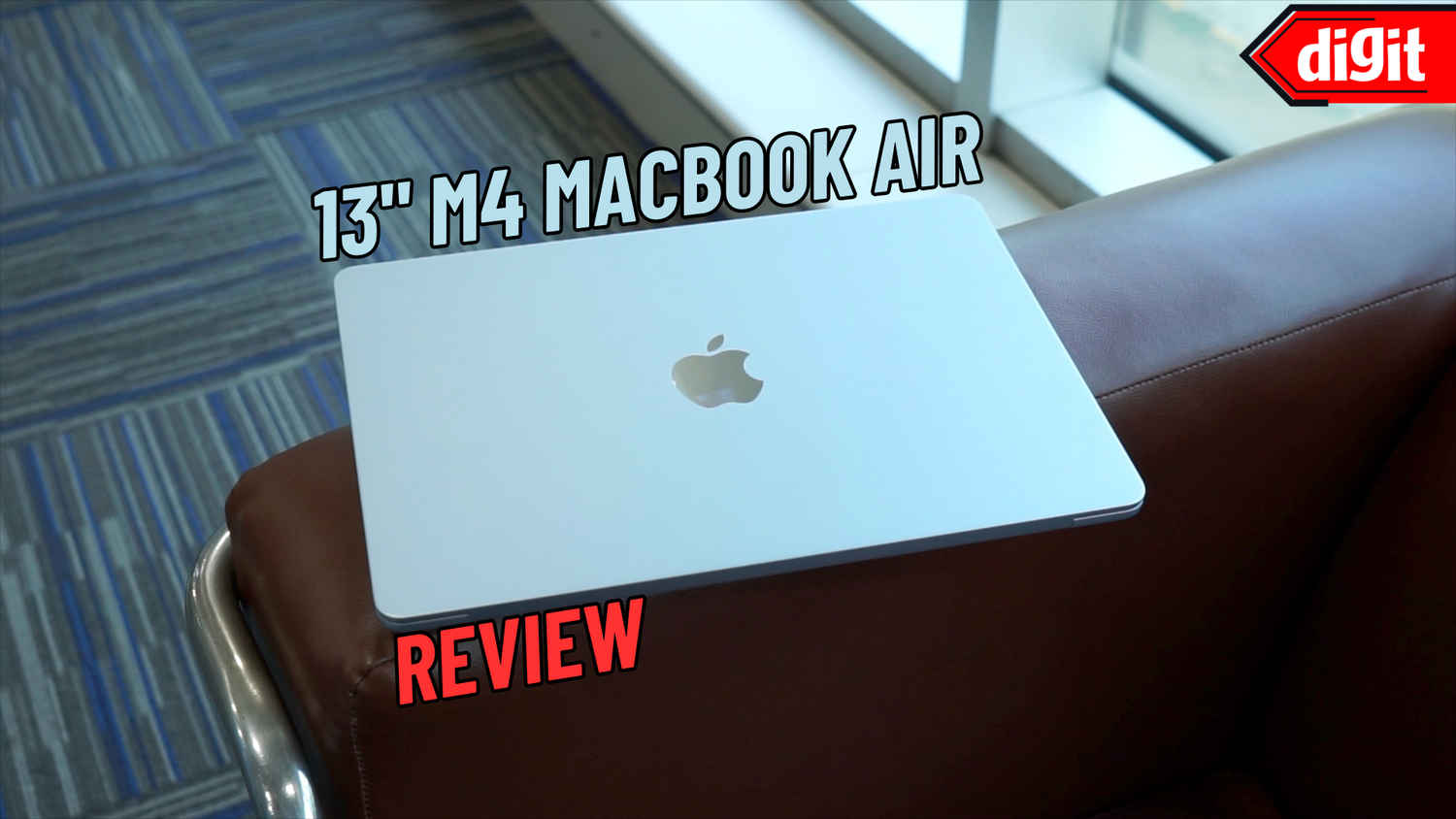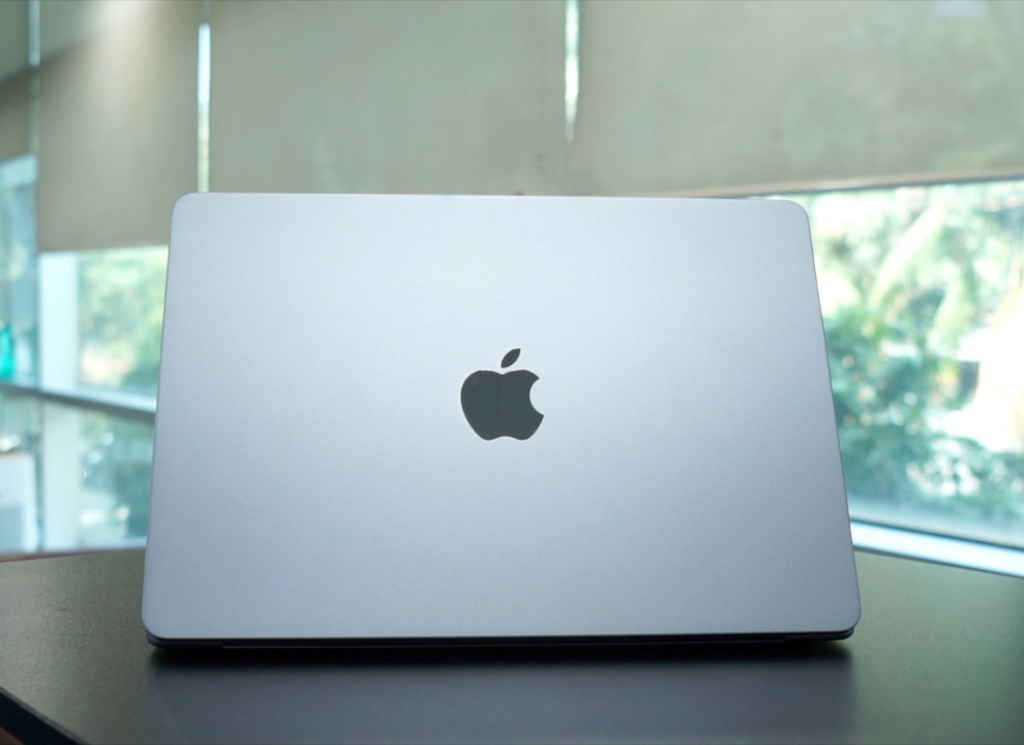

Apple’s MacBook Air lineup has always stood as a benchmark for ultra-thin, ultra-portable laptops. With the introduction of the new 13-inch MacBook Air M4 in 2025, Apple doubles down on its winning formula, but with a few thoughtful tweaks that make it even more compelling. At ₹99,900 for the 16GB RAM + 256GB storage variant, it offers a surprisingly well-rounded package that’s quieter, cooler (literally and aesthetically), and more capable than ever before.


After spending several weeks using the M4 MacBook Air as my daily driver for everything from writing and photo editing to gaming and video rendering, I have a lot to say about its strengths, weaknesses, and everything in between.
Also read: How to Set Up Your Mac Using Your iPhone or iPad
On the outside, not much has changed from the M2 and M3 designs, and that’s a good thing. The 13-inch M4 MacBook Air continues to be one of the sleekest and lightest premium laptops on the market. Its all-aluminium chassis feels reassuringly sturdy, with no flex on the keyboard deck or lid, and its footprint makes it easy to slide into any bag without adding noticeable bulk. It’s 11.3mm thin and weighs just 1.24kg, a delight for anyone who’s always on the move.
But what sets it apart this year is the new Sky Blue colour, which adds just enough flair to the minimalist design language. Under sunlight, it glows with a rich blue hue, but in indoor lighting or shadow, it subtly transitions to silver, creating a sophisticated dual-tone effect. People in the office couldn’t stop complimenting it, as it’s easily one of the most aesthetically pleasing laptops Apple has made in years.
The keyboard retains Apple’s now-mature scissor-switch mechanism. It’s comfortable for long typing sessions, responsive, and just the right amount of clicky without being noisy. Below it, the large Force Touch trackpad continues to be industry-leading in terms of gesture responsiveness and palm rejection. Even after hours of usage, it remains precise, and the surface feels smooth to the touch.
Also read: Microsoft needs to listen to HP to improve handheld gaming
The 13.6-inch Liquid Retina display may still be locked at 60Hz, but it’s a good one. With a resolution of 2560×1664 and support for P3 wide colour and True Tone, it renders crisp text, vibrant images, and punchy video. Brightness peaks at 500 nits, which is more than adequate for indoor use and tolerable outdoors, unless you’re sitting under direct sun.
Apple hasn’t made the jump to ProMotion on the Air, so you won’t get 120Hz smoothness like on the MacBook Pro, but for most users—browsing, writing, watching videos, editing photos—the panel performs beautifully. It’s colour-accurate enough for most design and photography work, and the pixel density makes reading a joy.
The four-speaker system is surprisingly punchy for a laptop this slim. Positioned under the display and bouncing sound off the surface, it delivers clean mids and highs. Bass is present, though not room-shaking. For video calls, Netflix binges, YouTube sessions, or even music playback in a small room, the setup is more than capable. If you want six speakers, you’ll need to step up to the 15-inch Air or the MacBook Pro.
The webcam has received a noticeable bump this year. It’s now a 12MP sensor and supports Apple’s Centre Stage feature, which intelligently keeps you in frame during video calls. Whether you’re on Zoom, Google Meet, or FaceTime, the image quality is sharp, colours are well balanced, and Centre Stage works reliably. The built-in mic array also captures voice clearly with decent noise isolation, making it a great all-in-one machine for remote workers or students.
The MacBook Air M4 is powered by Apple’s new M4 chip, which is based on a 3nm architecture. It features a mix of performance and efficiency cores that enable snappy responsiveness in regular use, along with surprisingly robust output in creative workloads.
There’s no fan. Zero. And yet the MacBook Air remains remarkably cool during normal tasks and only gets warm under load. Apple’s thermal management here is excellent, and the fact that you get this level of performance in complete silence is genuinely impressive.
In tasks like writing, emailing, multitasking with productivity apps, or managing a dozen browser tabs, the M4 chip simply flies. Everything feels instantaneous. Even light photo editing in Lightroom or Pixelmator Pro is handled with ease.
Where it really surprises is video editing. Editing 4K footage in DaVinci Resolve or Final Cut Pro is perfectly doable, especially for short projects. Scrolling through the timeline is smooth, preview playback doesn’t stutter, and for most casual creators, the performance is impressive.
However, when you push it with extended 4K renders or long gameplay sessions, the fanless design starts to show its limitations. Unlike the MacBook Pro, which has active cooling, the Air does throttle after 25–30 minutes of sustained load. For instance, in our testing, Lies of P started at 60FPS and dropped to around 50FPS after extended play—a very acceptable performance dip, especially considering the laptop remains completely silent throughout.
Still, for users doing batch rendering or multi-hour projects, the MacBook Pro is the better choice. But for most creative professionals—especially those with bursty workloads—the Air is shockingly competent.
The ₹99,900 base model comes with 256GB of storage, and while that might seem low in 2025, it’s still usable. After installing apps like, Lies of P (Game), WhatsApp, Notion, Brave, DaVinci Resolve, and a few benchmark tools, we were left with around 139GB of free space. That’s enough for many users, especially if your files are stored on iCloud or Google Drive.
Still, Apple’s ₹20,000 charge for upgrading to 512GB feels steep. We recommend buying a high-quality external SSD (1TB for around ₹10,000) instead—it’s cheaper, more flexible, and easier to upgrade in the future.
Also read: Best Laptops for Data Science and Machine Learning Students: A Buying Guide
This is where the MacBook Air M4 truly shines. Apple claims up to 18 hours of battery life, and in our testing, those numbers held up. For basic tasks like web browsing, document editing, and YouTube playback, we saw between 15.5 to 17.5 hours on a single charge. That’s an entire workday and then some, making it one of the most dependable laptops for long-haul use.
Charging is handled via MagSafe 3, which is both fast and satisfying to use. You can also charge via USB-C in a pinch, but MagSafe remains the more elegant solution.
The comparison is inevitable. The MacBook Pro M4 (starting ₹1.69 lakh) comes with 16GB RAM, 512GB storage, active cooling, ProMotion 120Hz Mini-LED display, extra ports, and a 6-speaker system. It’s made for power users, professionals working with massive files, and anyone needing sustained performance for long hours.
But the Air wins on value, portability, and silence. It’s smaller, 360 grams lighter, and more affordable—without sacrificing much for 90% of users.
If you primarily deal with bursty tasks—photo editing, coding, short video projects, writing, presentations—the MacBook Air M4 is more than sufficient. If your day-to-day involves constant 4K video exports, 3D modelling, or music production, then the MacBook Pro is the smarter long-term investment.
The 13-inch Apple MacBook Air M4 (2025) is arguably the best value-for-money MacBook Apple has ever made. With double the RAM, a fresh new look, and that brilliant M4 chip—all at a lower price than the M3 variant, it’s hard not to recommend it.
It’s not a gaming beast, and it’s not made for long-hour heavy renders. But for everyone else—students, writers, designers, coders, content creators, the M4 MacBook Air offers silent performance, unmatched battery life, a premium display, and one of the most travel-friendly form factor in the industry.
For ₹99,900, there are very few laptops in 2025 that offers this much efficiency, build quality, and power in such a compact and elegant package.